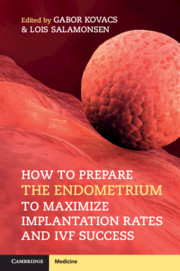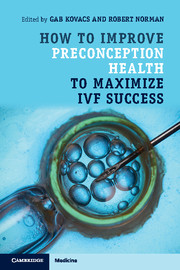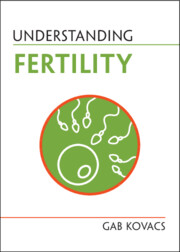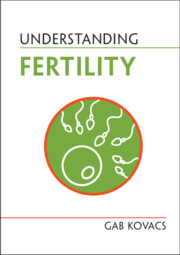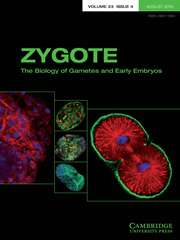How to Prepare the Endometrium to Maximize Implantation Rates and IVF Success
The last step in the IVF treatment cycle, embryo transfer, is also the process with the highest failure rate. No matter how good the laboratory technique is, a successful pregnancy will not be achieved without meticulous preparation of the uterus to accept the embryo. This book reviews the scientific evidence on endometrial receptivity, including histological, hormonal, biochemical, and immunological factors. Practical and concise, it supports gynecologists and embryologists to make evidence-based decisions that can influence the success rates of implantation and live births. Part of a series of books offering treatments and strategies for fertility and conception to optimize IVF outcomes, this volume is for all clinicians and embryologists working in reproductive medicine.
- Practical and concise, this book reviews scientific evidence on endometrial receptivity to enable clinicians to take evidence-based decisions and optimize IVF outcomes
- Authored by experts in the field, this book provides a comprehensive review of all current, up-to-date knowledge on factors impacting the endometrium
- A detailed volume that is part of a four-book series on improving the success of IVF, with other volumes focusing on periconception health, the egg and embryo, and male and sperm factors
Product details
March 2019Paperback
9781108402811
212 pages
234 × 155 × 10 mm
0.38kg
Available
Table of Contents
- 1. Physiology of endometrial development through the cycle and implantation Annabelle Brennan and Martha Hickey
- 2. Molecular and cellular basis of human embryo implantation Guiying Nie and Eva Dimitriadis
- 3. Protein biomarkers of endometrial receptivity Tracey A. Edgell
- 4. Genetic markers of endometrial receptivity (GMER) Patricia Díaz-Gimeno and Juan A. Garcia-Velasco
- 5. Effects of superovulation on the endometrium Natalie Hannan and Jemma Evans
- 6. Screening the uterine microbiome prior to embryo transfer Inmaculada Moreno and Carlos Simon
- 7. Estrogen and progesterone support in ART: optimizing implantation Jamie Stanhiser and Steven L. Young
- 8. The role of hysteroscopy and endometrial scratch in improving endometrial receptivity Yuval Or and Zeev Shoham
- 9. Fibroids and polyps: their effect on implantation Beverley Vollenhoven and Sarah Hunt
- 10. Cleavage stage or blastocyst transfer: which is better? Jason Kasraie
- 11. Dummy embryo transfer Khaldoun Sharif and Gamal I. Serour
- 12. Does the type of catheter used for embryo transfer matter? Tia Hunjan, Shirin Khanjani and Stuart Lavery
- 13. Should all embryos be transferred in unstimulated cycles? Nikoletta Panagiotopoulou and Siladitya Bhattacharya
- 14. Rest after embryo transfer is unhelpful Giuseppe Botta and Gedis Grudzinska
- 15. Ectopic pregnancies – why do they happen? R. R. Chodankar and Andrew Horne
- 16. The role on NK cells in implantation after IVF and treatment strategies Norman Shreeve and Ashley Moffett
- 17. Sex and immune receptivity for embryo transfer David J. Sharkey and Sarah A. Robertson
- 18. Immunotherapy/IVIG, prednisolone and intralipid in IVF Ole Bjarne Christiansen and Kathinka Marie Nyborg
- 19. The role of heparin and aspirin to aid implantation Luciano Nardo and Tarique Salman
- 20. Early pregnancy loss: causes and prevention Shreeya Tewary and Jan J. Brosens
- 21. Is the endometrium in women with PCOS compromised? Terhi T. Piltonen.

